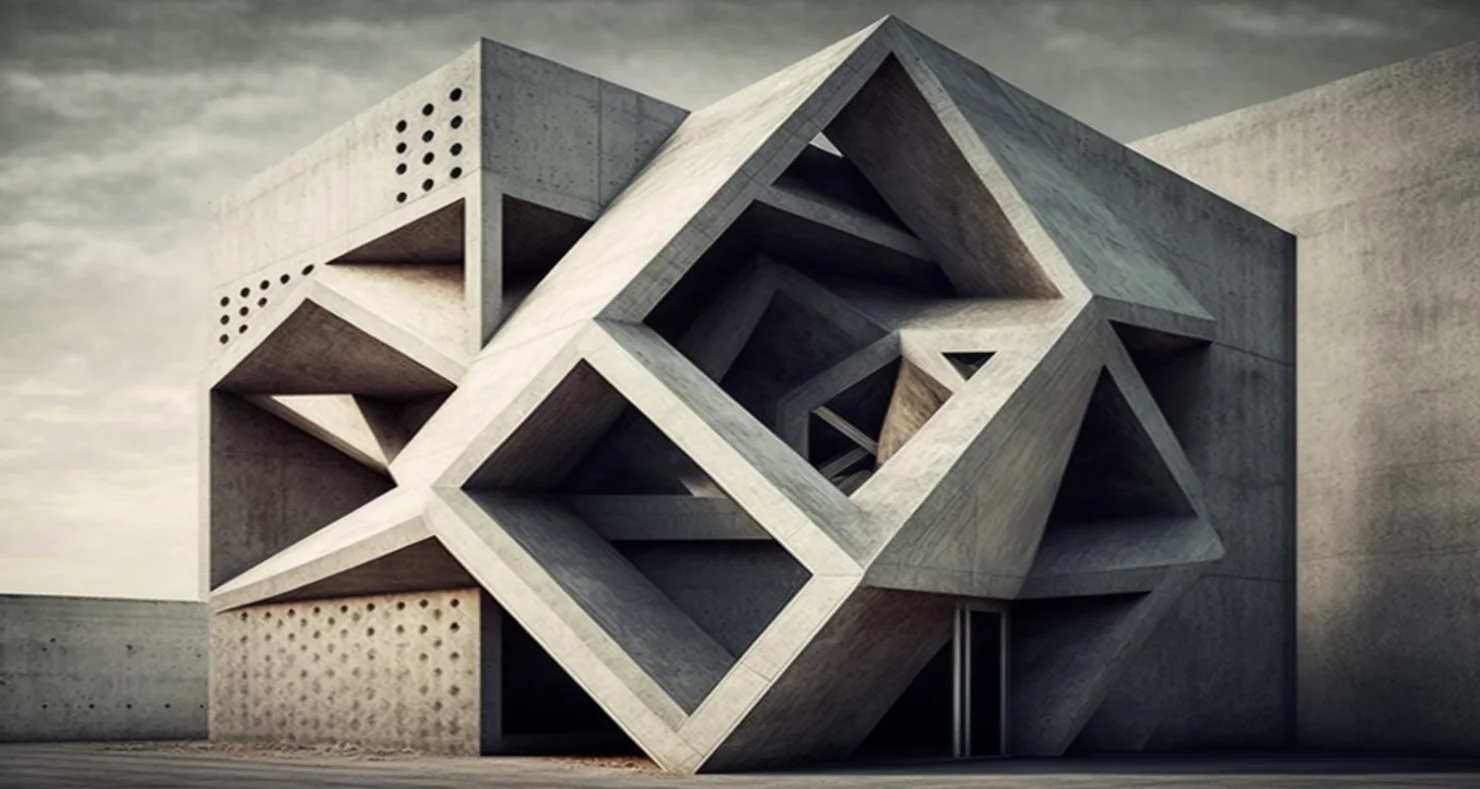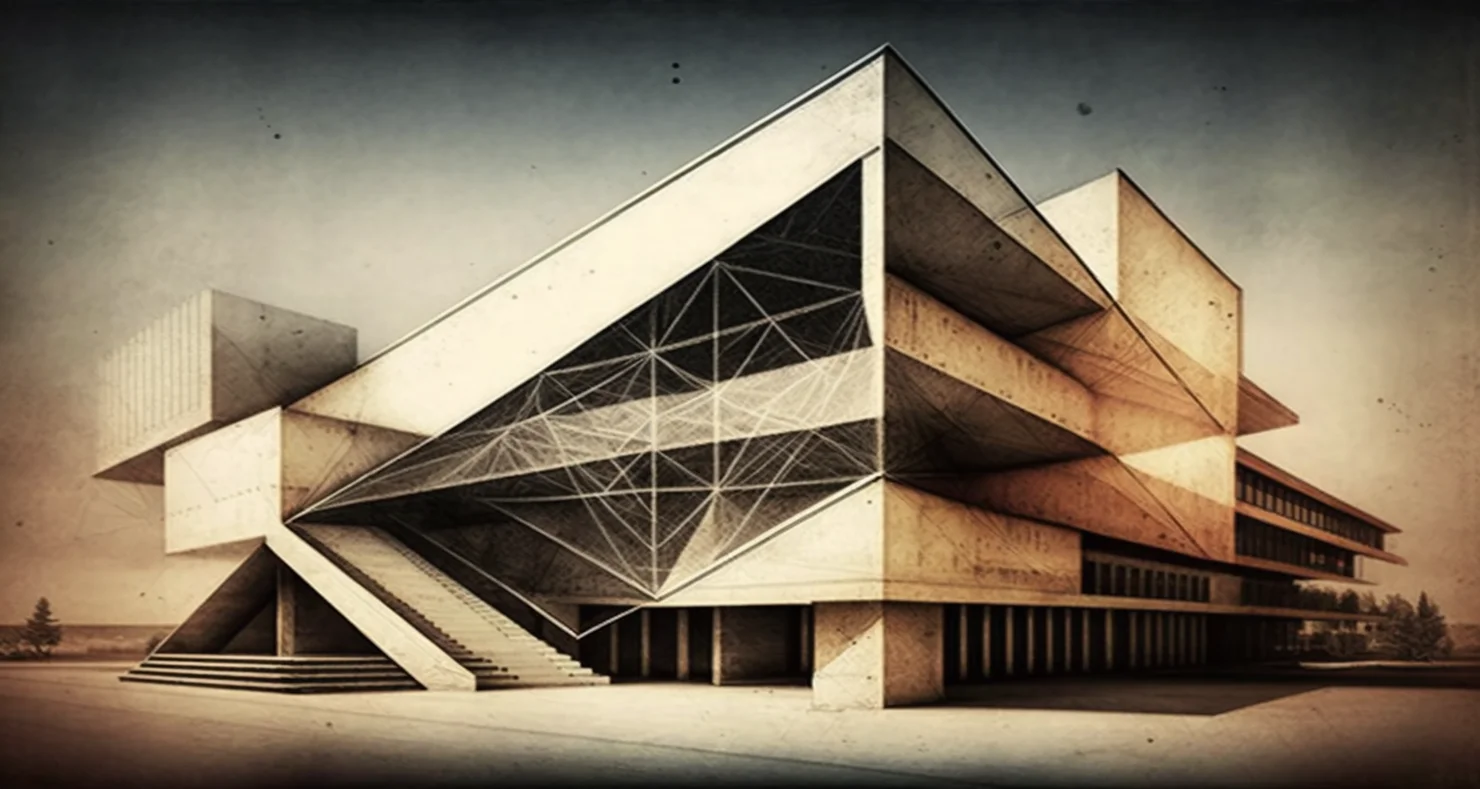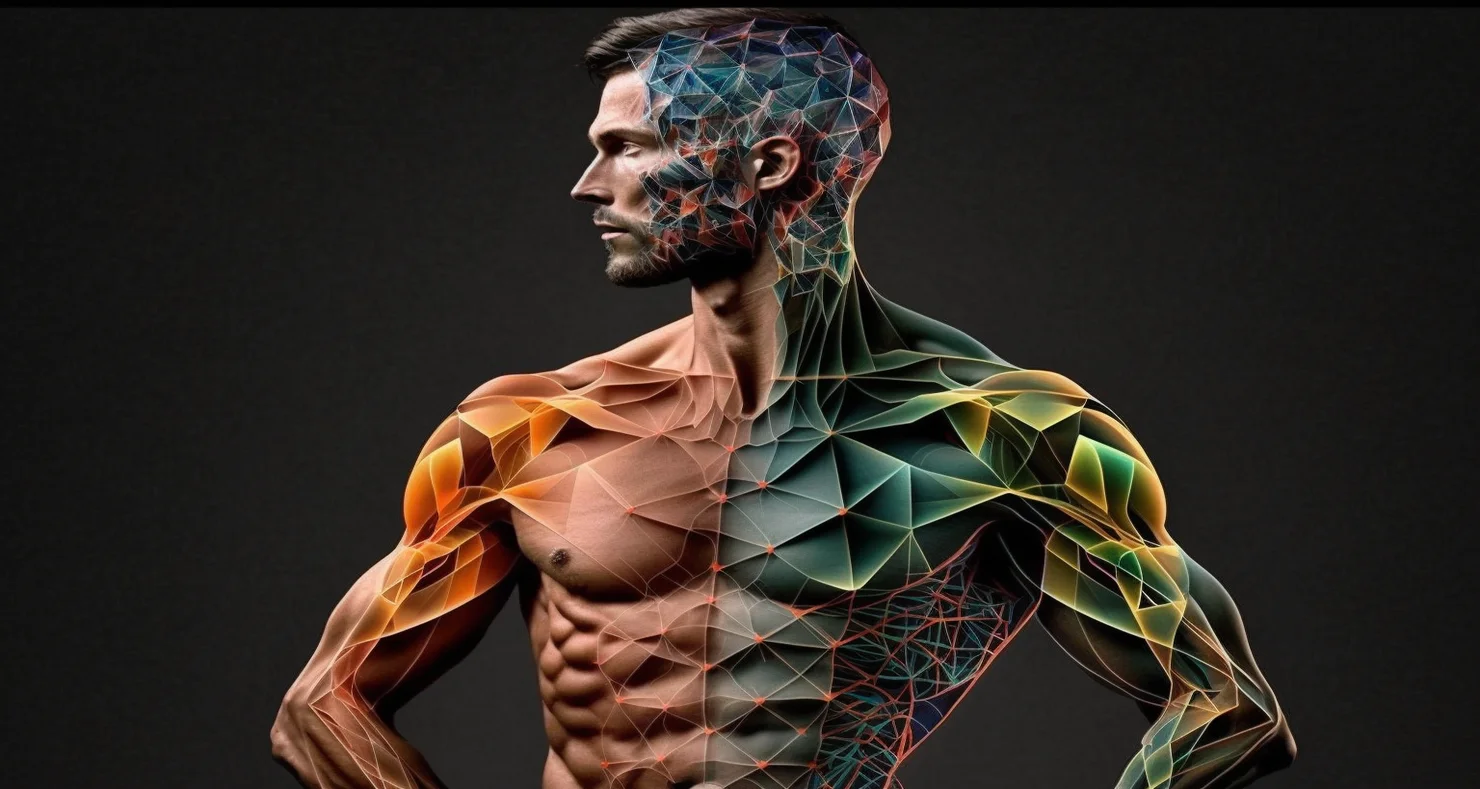Join us on an exciting journey of discovery as we explore the fascinating world of geometry! Our blog offers a comprehensive guide to understanding this fundamental field of mathematics, covering everything from basic concepts to advanced theories. Discover the beauty and elegance of shape and space and learn practical applications of geometry in everyday life, from architecture to art. Whether you’re a student, educator, or simply curious about the world around you, our guide to geometry, how to use sacred geometry is the perfect starting point for your journey.
What does mean geometry?
Geometry is a branch of mathematics that deals with the study of shapes, sizes, positions, and relationships between points, lines, angles, surfaces, and solids in space. It is concerned with the properties of geometric objects such as points, lines, angles, polygons, circles, spheres, and other shapes, and how they can be measured, compared, and related to one another.
Geometry plays a crucial role in many fields, including physics, engineering, architecture, computer graphics, and many more. It is also essential for understanding the principles of trigonometry, calculus, and other advanced mathematical concepts. Geometry is a vast subject, and its various subfields include Euclidean geometry, non-Euclidean geometry, differential geometry, topology, and more.
Geometry in mathematics
In mathematics, geometry is the study of shapes, sizes, and positions of objects in space. It involves the use of mathematical concepts such as points, lines, planes, angles, curves, and surfaces to describe and analyze the properties of objects and their relationships to each other.
There are several branches of geometry in mathematics, including:
- Euclidean Geometry: This is the study of the properties of objects in two-dimensional and three-dimensional space using the postulates and axioms of Euclid, a Greek mathematician who lived around 300 BC. Euclidean geometry is the most familiar type of geometry and is used extensively in high school and undergraduate mathematics courses.
- Analytic Geometry: This is the study of geometric objects using algebraic methods, such as coordinate systems and equations. Analytic geometry allows geometric problems to be translated into algebraic equations, making them easier to solve.
- Differential Geometry: This is the study of geometric objects using the tools of calculus and differential equations. Differential geometry is used in the study of curved objects, such as surfaces and manifolds, and is applied in many areas of mathematics and physics.
- Topology: This is the study of the properties of geometric objects that are preserved under continuous transformations, such as stretching, bending, and twisting. Topology is concerned with the global properties of objects, such as their connectedness and the number of holes they have, rather than their local properties.
Geometry plays a fundamental role in many areas of mathematics and is used extensively in fields such as physics, engineering, computer graphics, and architecture.

Geometry in physics
In physics, geometry refers to the study of the physical properties of space and time, including the relationships between objects in space and how they move and interact with one another.
The fundamental principles of geometry, such as the properties of points, lines, planes, and angles, are used to describe and understand the behavior of physical systems. For example, in classical mechanics, the motion of objects can be described using geometric concepts such as position, velocity, and acceleration, which are related to the geometry of the space in which the objects move.
In Einstein’s theory of relativity, geometry plays a crucial role in describing the curvature of spacetime caused by the presence of mass and energy, which in turn affects the motion of objects and the behavior of light. The mathematical tools of geometry, such as tensors and differential geometry, are also used in many other areas of physics, such as general relativity, quantum field theory, and string theory.
Geometry in engineering
In engineering, geometry refers to the use of geometric principles and techniques to design and analyze physical systems, structures, and components.
Geometry is essential in engineering design because it provides a framework for visualizing and understanding the physical properties and behaviors of structures and systems. It is used to create accurate 2D and 3D models of objects and systems, which can be used to analyze stress, strain, deformation, and other physical properties.
For example, in civil engineering, geometry is used to design buildings, bridges, roads, and other structures. In mechanical engineering, it is used to design machines, engines, and other mechanical systems. In electrical engineering, geometry is used to design and analyze circuits and other electrical systems.
Computer-aided design (CAD) software is commonly used in engineering to create and manipulate geometric models of objects and systems, which can be used for simulation and analysis. The mathematical tools of geometry, such as trigonometry, calculus, and linear algebra, are also used extensively in engineering.
Geometry in architecture?
In architecture, geometry refers to using geometric principles and shapes to design buildings, structures, and other physical spaces.
Geometry as a tool for architects provides a means of organizing and manipulating space and creating harmonious and aesthetically pleasing designs. Geometric shapes such as squares, rectangles, circles, and triangles are commonly used in architectural design, and the proportions and relationships between these shapes are carefully considered to create balance, symmetry, and visual interest.
The principles of geometry are also used to design the structural components of buildings, such as walls, roofs, and arches, to ensure that they are stable and can support the weight of the building.
In addition to traditional geometric shapes, modern architecture often employs complex, irregular geometries and non-standard shapes, such as curves and free-form surfaces, to create unique and innovative designs.
Again, CAD software is commonly used in architectural design to create and manipulate geometric models of buildings and spaces. The use of 3D modeling software allows architects to visualize and test their designs in three dimensions, which can help to identify potential problems and improve the design before construction begins.
Geometry in nature?

In nature, geometry refers to the patterns and shapes that are observed in the physical world, from the microscopic scale of atoms and molecules to the vastness of the universe.
Many natural phenomena can be described and understood using geometric principles, such as the shapes of crystals and snowflakes, the patterns of plant growth and leaf arrangement, and the movements of animals and other organisms.
Geometry is also evident in the structure and organization of biological systems, such as the spiral patterns of shells and horns, the hexagonal shapes of honeycombs, and the fractal patterns of trees and ferns. These natural patterns and shapes are often efficient and optimized for specific functions, such as maximizing surface area for gas exchange or minimizing stress on structural components.
The study of natural geometry has applications in many fields, including biology, physics, chemistry, ecology, and more. It provides insight into the underlying principles and patterns that govern the behavior and organization of natural systems and can inspire new ideas and innovations in science and technology.
Geometry in human body?
In the human body, geometry refers to the study of the shapes, sizes, and relationships of the body’s structures and organs.
The human body is a complex system of interconnected structures, each with its own unique shape and function. The study of the geometric properties of these structures can provide insight into their function, as well as into the overall structure and organization of the body as a whole.
For example, geometry is used in anatomy to describe the shapes and sizes of bones, muscles, and other tissues. It is also used to study the structure and function of organs such as the heart, lungs, and brain.
The principles of geometry are also used in medical imaging techniques such as X-rays, CT scans, and MRI scans, which create detailed images of the body’s internal structures. These images are used to diagnose and treat a wide range of medical conditions, from broken bones to tumors and other abnormalities.
In addition to its practical applications in medicine, the study of human body geometry has also inspired art and design throughout history. The proportions and shapes of the human body have been studied and celebrated in sculpture, painting, and other forms of art, and have influenced architectural and design principles in many cultures.

Geometry in human brain?
In the human brain, geometry refers to the study of the spatial organization and connections between neurons and neural networks.
The brain is a complex system of interconnected neurons, each with its own unique shape, size, and function. The study of the geometric properties of these neurons and their connections can provide insight into how the brain processes information and how different regions of the brain work together to support cognitive functions such as perception, memory, and language.
For example, the study of the geometry of cortical neurons has revealed how the structure of the brain’s surface, or cortex, is organized into different layers and columns, each with its own specific function. The geometric properties of individual neurons, such as their branching patterns and the angles between their branches, can also provide information about their function and connectivity within neural circuits.
The principles of geometry are also used in brain imaging techniques such as magnetic resonance imaging (MRI) and diffusion tensor imaging (DTI), which create 3D images of the brain’s structure and connectivity. These images are used to diagnose and treat neurological conditions such as tumors, strokes, and degenerative diseases, as well as to study the brain’s structure and function in healthy individuals.
In addition to its practical applications in neuroscience and medicine, the study of brain geometry has also inspired new ideas and approaches in computer science and artificial intelligence. The principles of neural geometry and connectivity are being used to develop new algorithms and models for machine learning and artificial neural networks.
Geometry in astrology?
In astrology, geometry refers to the study of the relationships and angles between celestial bodies, particularly the planets and their movements.
Astrology is based on the idea that the position and movements of celestial bodies can have an influence on human affairs and events on Earth. The study of the geometric relationships between these bodies is central to understanding astrological principles and making predictions based on astrological charts and interpretations.
One important concept in astrological geometry is the aspect, which refers to the angular relationships between two or more planets in a chart. Different aspects are believed to have different effects on personality traits, life events, and other aspects of human experience.
For example, the conjunction aspect, which occurs when two planets are in the same position or very close to each other in a chart, is believed to enhance the energies of those planets and to represent an opportunity for growth and change. The opposition aspect, which occurs when two planets are in opposite positions in a chart, is believed to create tension and conflict between their energies and to represent a challenge or obstacle to be overcome.
Astrological geometry is also used to study the movements of the planets and to make predictions based on their positions and alignments. For example, the study of retrograde motion, where a planet appears to move backwards in its orbit, is believed to have particular significance in astrology and can be used to predict periods of introspection, reflection, and reevaluation.
The study of astrological geometry is a key part of astrology and is used to gain insight into human experience and to make predictions about future events based on the movements and relationships of celestial bodies.
Geometry connection to fractals in nature
Geometry and fractals are fundamental principles that can be observed in many natural phenomena, from the shapes of plants and animals to the patterns of clouds and water.
Geometry refers to the study of the shapes and sizes of objects in space, while fractals refer to complex geometric shapes that exhibit self-similarity at different scales.
In nature, geometry can be seen in the shapes of crystals, the spirals of seashells, and the branching patterns of trees and rivers. These shapes are often influenced by physical and environmental factors such as gravity, wind, and water flow, as well as by genetic and evolutionary factors.
Fractals are particularly common in natural forms such as ferns, coastlines, and clouds. These complex, repeating patterns are created through iterative processes that generate self-similarity at different scales. For example, the branching patterns of trees and rivers can be seen as fractal patterns that repeat at different levels of detail.
Fractals are also found in the shapes of many natural objects, such as snowflakes and seashells, which exhibit complex patterns and shapes that repeat at different scales. These patterns can be described using mathematical formulas, and have been studied and applied in a wide range of fields, from computer graphics to physics and biology.
The principles of geometry and fractals provide a framework for understanding the shapes and patterns of natural forms, and have inspired scientific inquiry and artistic expression for centuries.
Sacral geometry
Sacral geometry is a term used in spiritual, healing and religious practices that refers to the use of geometric shapes, patterns, and symbols to connect with and activate the sacral chakra.
The sacral chakra is the second energy center in the human body, located in the lower abdomen, and is associated with creativity, pleasure, and emotional balance. In some spiritual and healing practices, the use of certain geometries and symbols is believed to stimulate and balance the energy flow of the sacral chakra, leading to increased vitality, creativity, and emotional well-being.
Sacral geometry may include the use of sacred geometry symbols such as the circle, square, and triangle, as well as more complex patterns such as the flower of life and the Sri Yantra. These shapes are believed to have specific vibrational frequencies and energetic properties that can be used to influence the energy flow in the body and promote healing and spiritual growth.
The use of sacral geometry may take many forms, including meditation, visualization, and physical practices such as yoga and dance. Some practitioners may use physical objects, such as crystals or mandalas, to enhance the energetic effects of the geometry. Geometry influent on all religions, fore example:
- Sacred Geometry in Hinduism: In Hinduism, sacred geometry is used to represent the creation and structure of the universe. The Sri Yantra, for example, is a complex geometric pattern used in meditation and spiritual practice, representing the union of masculine and feminine energies and the balance of opposites.
- Geometry in Christianity: Geometry has also been used in Christian symbolism, with the circle, for example, representing the eternity and unity of God, and the triangle representing the Holy Trinity. In medieval Christian art, geometric shapes and patterns were often used to convey spiritual concepts and stories.
- Geometry in Buddhism: Buddhism has also used geometry in its symbolism, with the mandala being a prominent example. Mandalas are intricate circular designs used in meditation and spiritual practice, representing the universe and the path to enlightenment.

Sacred Geometry in Hinduism
Sacred geometry is used as a symbolic language to represent spiritual concepts and principles. Here are a few examples:
- Sri Yantra: Sri Yantra is a sacred geometric pattern consisting of nine interlocking triangles that represent the union of masculine and feminine energies and the balance of opposites. The center point of the Sri Yantra is considered the point of creation, and the outer circles represent the cycles of the universe.
- Mandala: Mandalas are intricate circular designs used in Hinduism and other spiritual practices to represent the universe and the path to enlightenment. They often incorporate geometric patterns such as circles, squares, and triangles, which are believed to have spiritual significance.
- Vastu Shastra: Vastu Shastra is a Hindu architecture and design tradition incorporating sacred geometry principles. Vastu Shastra uses geometric patterns and ratios to create harmonious living spaces that promote well-being and spiritual growth.
- Yantra: Yantras are geometric patterns used in Hinduism as visual aids for meditation and spiritual practice. They are often made of metal, stone, or paper and may incorporate symbols, shapes, and patterns to represent different deities or spiritual concepts.
Hinduists believe in conveying deep spiritual concepts and promoting balance, harmony, and well-being in the individual and the universe.
Sacred Geometry in Christianity
Sacred geometry has played a role in Christian art, architecture, and symbolism throughout history. Here are a few examples:
- The Rose Window: The Rose Window is a circular stained-glass window often found in Gothic cathedrals. It typically features intricate geometric patterns, including circles, squares, triangles, and other shapes, which are believed to represent the perfection and symmetry of God’s creation.
- The Vesica Piscis: The Vesica Piscis is a geometric shape formed by the intersection of two circles, often used in Christian symbolism to represent the union of God and humanity. It is sometimes used as a decorative element in Christian art and architecture.
- The Celtic Cross: The Celtic Cross is a Christian cross with a circle intersecting the arms of the cross, forming a distinctive shape. The circle is often seen as a representation of eternity and the infinite nature of God, while the cross represents the sacrifice of Jesus Christ.
- The Golden Ratio: The Golden Ratio, a mathematical proportion found in nature and art, has also been associated with Christian symbolism. The proportion is believed to represent divine proportion and has been used in Christian art and architecture to create a sense of harmony and balance.
Christians used sacred geometry in symbolism to express the divine order and perfection of God’s creation and evoke a sense of harmony, balance, and spiritual significance.
Sacred Geometry in Buddhism
Sacred geometry in Buddhism played a role in the art and symbolism of Buddhist cultures. Here are a few examples:
- The Mandala: The Mandala is a geometric symbol used in many Buddhist traditions to represent the universe, and is often used as a tool for meditation and spiritual practice. The Mandala typically features a square with four gates, and a circular center point. The square is believed to represent the physical world, while the circle represents the spiritual realm.
- The Dharma Wheel: The Dharma Wheel, also known as the Wheel of Life, is a common Buddhist symbol that features a circle with eight spokes. The wheel is believed to represent the teachings of the Buddha, with the eight spokes representing the Eightfold path.
- The Stupa: The Stupa is a dome-shaped structure used in many Buddhist traditions as a place of meditation and worship. The Stupa typically features intricate geometric designs, including circles, squares, and triangles, which are believed to represent the elements of the universe.
- The Lotus Flower: The Lotus Flower is a common symbol in Buddhism that is often depicted in a geometric form. The lotus flower is believed to represent spiritual awakening, with the unfolding petals symbolizing the journey to enlightenment.
With geometric patterns and shapes used to represent spiritual concepts and principles, these symbols are often used as tools for meditation and spiritual practice, helping practitioners to connect with the divine and achieve a deeper understanding of the universe.
How to use geometry smarter in our life?
Here are a few ways to inspire you how you can use geometry smarter in your life:
- Home Improvement: Geometry can be useful for home improvement projects, such as measuring new furniture or calculating the amount of paint you need for a room. Understanding basic geometry concepts, such as area, perimeter, and angles, can help you to plan and execute these projects more efficiently.
- Cooking and Baking: Geometry can also be applied in the kitchen, particularly when it comes to measuring and portioning ingredients. For example, understanding how to calculate the volume of different shapes can help you to measure ingredients more accurately, which can lead to better cooking and baking results.
- Travel: Geometry can also come in handy when you’re traveling, particularly when it comes to navigation. Understanding basic geometric concepts, such as direction and distance, can help you to navigate and explore new places more effectively.
- Design and Creativity: Geometry is also essential in design and creativity, particularly in fields like architecture, graphic design, and art. Understanding how to use geometric shapes, patterns, and proportions can help you to create more visually appealing and balanced designs.
Understanding geometry can help you to make more informed decisions and solve problems more efficiently in your daily life. Whether you’re measuring ingredients in the kitchen, designing a new space, or exploring a new place, applying geometry concepts can help you to achieve better results and make the most of your experiences.
How to better use geometry in architecture these days? Where to improve?
Geometry plays a crucial role in architecture, and there are several ways to better use geometry in architecture today. Here are a few ways to improve the use of geometry in architecture:
- Incorporate Digital Technologies: With the advancements in digital technologies, architects can now use powerful software programs to create more complex and sophisticated geometries. These programs allow architects to visualize and manipulate complex geometries in 3D, which can lead to more innovative and efficient designs.
- Sustainable Design: Geometry can also play a role in sustainable design, particularly when it comes to optimizing the use of resources such as energy and materials. By using geometry to create more efficient and optimized designs, architects can reduce waste and minimize the environmental impact of their projects.
- Parametric Design: Parametric design is an approach that uses algorithms and mathematical equations to create complex and intricate geometries. This approach allows architects to explore a wide range of design options and to quickly iterate through different geometries to find the best solution.
- Design for Fabrication: With the advancements in fabrication technologies, architects can now use geometry to create complex structures and forms that were previously impossible to build. By designing for fabrication, architects can create more efficient and cost-effective structures that are easier to build and maintain.
There are several ways to better use geometry in architecture today, from incorporating digital technologies and sustainable design principles to exploring new approaches like parametric design and designing for fabrication. By using geometry in more innovative and efficient ways, architects can create more visually appealing, sustainable, and functional designs that meet the needs of the modern world.













